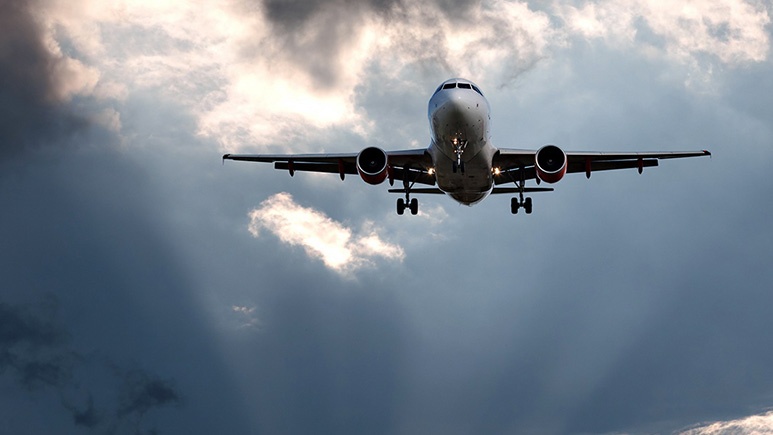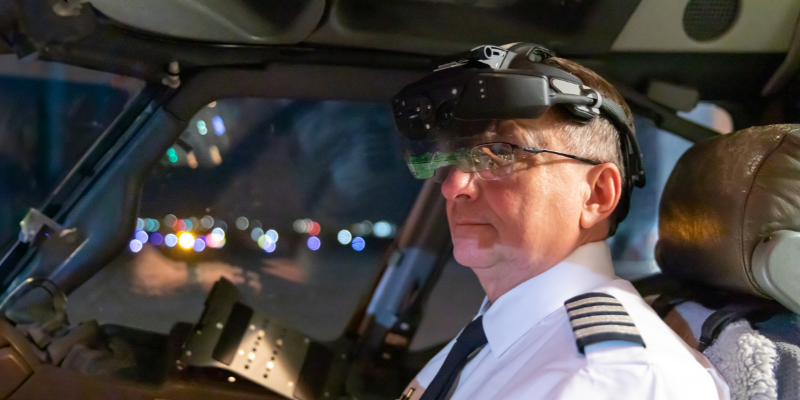Better known as ADS-B, Automatic Dependent Surveillance-Broadcast systems are a key part of the Federal Aviation Administration’s vision for NextGen air transportation. As the FAA ADS-B Out deadline quickly approaches, aircraft operators who have not yet achieved compliance are facing increased pressure to either implement an FAA-approved system or risk being grounded when the deadline hits on January 1, 2020.
Not surprisingly, a wide variety of ADS-B Out solutions have hit the market since the FAA first announced its mandate. But not all systems are created equal. To ensure your ADS-B Out system meets FAA requirements, it’s critical to understand the guidelines outlined in 14 CFR § 91.227.
Here’s a rundown of 14 CFR § 91.227, which identifies the ADS-B system capabilities needed to ensure compliance by January 1, 2020.
A Quick Primer on ADS-B
To achieve its Next Generation Air Transportation System (NextGen), the FAA is transitioning away from radar in favor of ADS-B. ADS-B uses GPS signal tracking to enhance navigational accuracy. It enables more direct flight plans that, in turn, reduce time, emissions, and costs. ADS-B also expands navigational coverage to areas previously beyond radar range, such as the Gulf of Mexico and parts of Alaska.
Read our ADS-B blog for more on the FAA’s mandate.
The Key Requirements in 14 CFR § 91.227
The FAA has drafted several policies related to ADS-B Out. In 14 CFR 91.225, the agency outlines which aircraft must comply based on its defined airspace. Meanwhile, 14 CFR § 91.227, identifies ADS-B equipment performance requirements, and a just-released policy details pre-flight performance requirements based on ADS-B Out implementation.
To help aircraft operators, who have not yet achieved compliance, ensure they select the best ADS-B Out solution, we’ve outlined the key requirements from 14 CFR § 91.227, which span broadcast and power, performance, broadcast message elements, and latency.
ADS-B Out Broadcast Link and Power Requirements
For aircraft operating in Class A airspace, ADS-B Out solutions must meet the power output and antenna specifications for Class A1, A1S, A2, A3, B1S, or B1 in TSO-C166b, Extended Squitter ADS-B and Traffic Information Service-Broadcast (TIS-B) Equipment Operating on the Radio Frequency of 1090 Megahertz (MHz).
Aircraft operating outside of Class A airspace, but still required to fulfill the FAA ADS-B Out mandate, must install a solution that meets the output power and antenna requirements of one of the following:
- Class A1, A1S, A2, A3, B1S, or B1 in TSO-C166b
- Class A1H, A1S, A2, A3, B1S, or B1 equipment in TSO-C154c, Universal Access Transceiver (UAT) Automatic Dependent Surveillance-Broadcast (ADS-B) Equipment Operating on the Frequency of 978 MHz
Minimum Broadcast Message Elements for ADS-B Out
To comply with the FAA mandate, an ADS-B Out system must broadcast a number of key data points. These include indications of:
- An aircraft’s length and width, longitude and latitude, barometric pressure altitude, and velocity
- Whether TCAS II or ACAS is installed and operating in a way that generates resolution advisory alerts
- If TCAS or ACAS is installed, what resolution advisory, if any, is in effect
- The Mode 3/A transponder code as outlined by ATC
- The aircraft call signal submitted on the flight plan or its registration number (The exceptions are when a pilot hasn’t entered a flight plan or requested ATC services and is using a TSO-C154c self-assigned temporary 24-bit address.)
- If the flight crew has identified a radio communication failure, emergency, or unlawful interference
- Aircraft “IDENT” to ATC
- Aircraft’s assigned ICAO 24-bit address (except when the pilot has not filed a flight plan, has not requested ATC services, and is using a TSO-C154c self-assigned temporary 24-bit address)
- Aircraft emitter category
- Whether an ADS-B In system is installed
- An aircraft's geometric altitude
ADS-B Out Performance Requirements
To achieve compliance, NACP must be less than 0.05 nautical miles, with NACV less than 10 meters/second. An aircraft’s NIC needs to be less than 0.2 nautical miles. SDA and SIL must be 2 and 3, respectively. The ADS-B Out system must broadcast changes to NACP, NACV, and SIL within 10 seconds and changes to NIC within 12 seconds.
ADS-B Out Latency Requirements
An ADS-B Out solution must enable an aircraft to transmit its geometric position within a maximum of 2.0 seconds from the time of position measurement to its transmission. Within this 2.0 seconds of latency, no more than 0.6 seconds can be uncompensated latency, and an aircraft is required to compensate for latency above that 0.6 seconds via an extrapolation of the geometric position to the time of message transmission.
While airborne or moving on an airport surface, aircraft are also required to transmit their positions and velocity a minimum of once every second. When stationary on an airport surface, the position must be transmitted at least once every 5 seconds.
Navigating the ADS-B Out Solution Landscape
When determining which ADS-B Out solution to install in your aircraft, the FAA’s equipment performance requirements are the best place to start. However, among FAA-approved solutions, it’s critical to evaluate additional details such as cost, installation time and grounded time.
AerSale® understands the role that cost and installation time play in selecting an FAA-approved ADS-B Out system. That’s why we’ve designed AerTrak®, our proprietary solution, to minimize cost and maximize efficiency. AerTrak is FAA approved to satisfy ADS-B Out for Boeing 737, 757, and 777 aircraft, getting your fleet in compliance faster and for less.
Unlike many ADS-B Out solutions, our aerospace engineers created AerTrak as a standalone system. This eliminates the need for costly, time-consuming changes to existing MMRs. Our technicians can install AerTrak at any hangar worldwide. From beginning to end, our process gets your aircraft back in the air in just three days—while costing less.
With the FAA ADS-B Out deadline approaching, now is the time to choose a solution that ensures compliance. Contact our team today to discover how AerTrak can help you satisfy the FAA mandate with fewer costs, less grounded time and a lead time of just four weeks.





